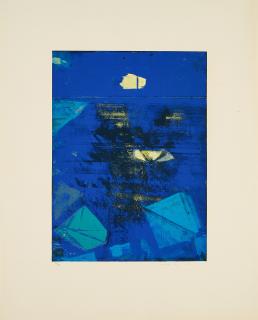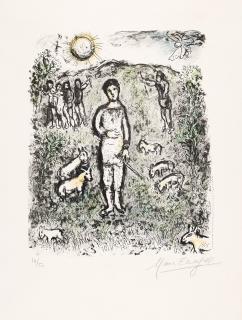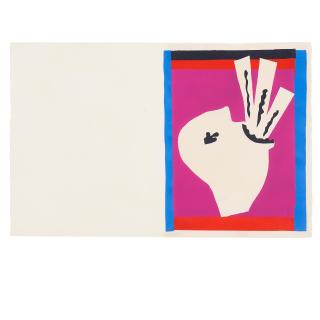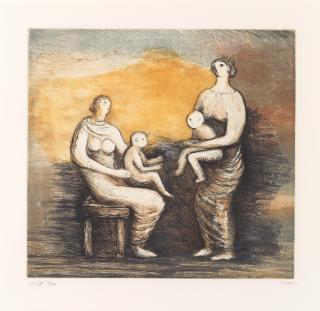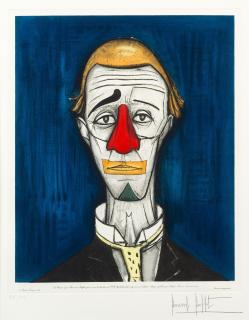Max Ernst Brühl, Germany 1891 - 1976 Paris, France
The artist Max Ernst
- One of the most important representatives of Surrealism with roots in Dadaism.
- Joined the Surrealist movement around André Breton as early as 1922.
- Pioneer and inventor of drip painting (at that time: Oscillation), known from action painting.
Maximilian Maria Ernst, born 02.04.1891 in Brühl, Germany, died 01.04.1976 in Paris, was one of the most important representatives of Surrealism and a member of the Surrealist movement around André Breton – he worked as a painter, sculptor and graphic artist. Max Ernst received US citizenship in 1948 and French citizenship ten years later. Ernst's visual language is dreamlike, enigmatic, irritating to bizarre and yet impressive - his works are described as the result of his »precise imagination«.
His works, which are now unmistakably surrealist, often show mixed creatures and other creatures, as well as pictorial compositions that are puzzling not only because of the shifted proportions of what they depict. Characteristic examples are The Elephant of Celebes (1921), Oedipus Rex (1922) or The House Angel (1937). Ernst changed his techniques and methods at times: He produced prints and frottages, collages and oil paintings, and experimented with drip painting (Der verwirrte Planet, 1942), which he developed himself and which would not find much favour until the later emergence of action painting.
At that time he called the technique Oscillation. Numerous illustrated books and sculptures complete his portfolio. Together with Johannes Baargeld and Hans Arp, Ernst formed the so-called Dada group in Cologne in 1919. Three years later, he finally went to Paris and joined the Surrealist movement around André Breton. With Breton's publication of the Surrealist Manifesto in 1924, Ernst, like many of the Dadaists of the time, took a leading role in the creation of Surrealist art. He spent the 1920s and 30s living in France until the outbreak of the Second World War, where he was interned in camps several times.
In 1941 Ernst finally emigrated to the USA. He did not return to France until 1953, together with his fourth wife. Max Ernst was honoured in several major retrospectives during his lifetime: in 1951 on the occasion of his 60th birthday at the Augustusburg Palace in Brühl, in 1962 at the Wallraf-Richartz Museum in Cologne and in 1975 at the Guggenheim Museum in New York. He achieved international success after being awarded the Grand Prize for Painting at the Venice Biennale in 1954. He died in 1976, one day before his 85th birthday.
Der Künstler Max Ernst
- Einer der wichtigsten Vertreter des Surrealismus mit Wurzeln im Dadaismus.
- Schloss sich bereits 1922 der surrealistischen Bewegung um André Breton an.
- Wegbereiter und Erfinder des Drip Painting (damals: Oszillation).
Maximilian Maria Ernst, geb. 02.04.1891 in Brühl, Rheinland, gest. 01.04.1976 in Paris, war einer der bedeutendsten Vertreter des Surrealismus und Mitglied der surrealistischen Bewegung um André Breton – er war als Maler, Bildhauer und Grafiker tätig. Max Ernst erhielt 1948 die US-amerikanische Staatsbürgerschaft und zehn Jahre später die französische. Ernsts Bildsprache ist traumartig, rätselhaft, irritierend bis bizarr und doch eindrucksvoll – seine Werke werden als das Ergebnis seiner »präzisen Phantasie« beschrieben.
Seine heute unverkennbar surrealistischen Arbeiten zeigen oftmals Mischwesen und andere Kreaturen sowie Bildkompositionen, die nicht nur durch verschobene Größenverhältnisse des Dargestellten Rätsel aufgeben. Charakteristische Beispiele hierfür sind Der Elefant von Celebes (1921), der Ödipus Rex (1922) oder Der Hausengel (1937). Seine Techniken und Methoden wechselte Ernst streckenweise: Er fertigte Druckgrafiken und Frottagen, Collagen und Ölgemälde und experimentierte mit dem eigens entwickelten Drip Painting (Der verwirrte Planet, 1942), das erst mit dem später aufkommenden Action Painting großen Anklang finden sollte. Die Technik nannte er damals Oszillation.
Zahlreiche illustrierte Bücher und Skulpturen vervollständigen sein Portfolio. Ernst gründete 1919 zusammen mit Johannes Baargeld und Hans Arp in Köln die sogenannte Dada-Gruppe, drei Jahre später begab er sich schließlich nach Paris und schloss sich der surrealistischen Bewegung rund um André Breton an. Mit Bretons Veröffentlichung des Surrealistischen Manifests 1924 nimmt Ernst wie viele der damaligen Dadaisten eine tragende Rolle bei der Schöpfung surrealistischer Kunst ein. Die 1920er- und 30er-Jahre lebte er bis zum Ausbruch des Zweiten Weltkrieges in Frankreich, wo er mehrere Male in Lagern interniert wurde.
1941 emigrierte Ernst schließlich in die USA. Er kehrte erst 1953 gemeinsam mit seiner vierten Ehefrau zurück nach Frankreich. Max Ernst wurde zu Lebzeiten in mehreren großen Retrospektiven geehrt: 1951 anlässlich seines 60. Geburtstages im Brühler Schloss Augustusburg, 1962 im Wallraf-Richartz-Museum in Köln und 1975 im New Yorker Guggenheim-Museum. Internationalen Erfolg erlangte er, nachdem er 1954 auf der Biennale von Venedig mit dem großen Preis für Malerei honoriert wurde. Er starb 1976 einen Tag vor seinem 85. Geburtstag.
Max Ernst in News and Exhibitions
Surrealistic Creatures – an unusual visit to the zoo from Breton to Varo
The Max Ernst Museum in Brühl opens the exhibition Surrealistic Creatures on October 3 2021, showing 140 works by a total of 70 artists from around the world.
Max Ernst in News and Exhibitions
Surreale Tierwesen – ein ungewöhnlicher Zoobesuch von Breton bis Varo
Das Max Ernst Museum in Brühl eröffnet am 3. Oktober 2021 die Ausstellung Surreale Tierwesen und zeigt dort 140 Werke von insgesamt 70 Künstlerinnen und Künstlern der ganzen Welt.


